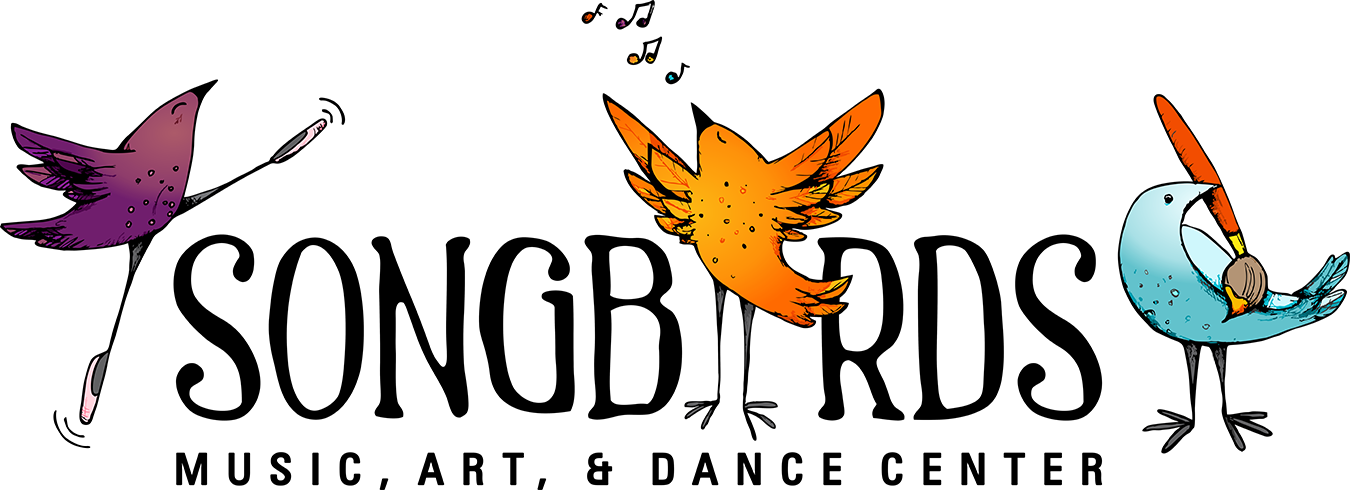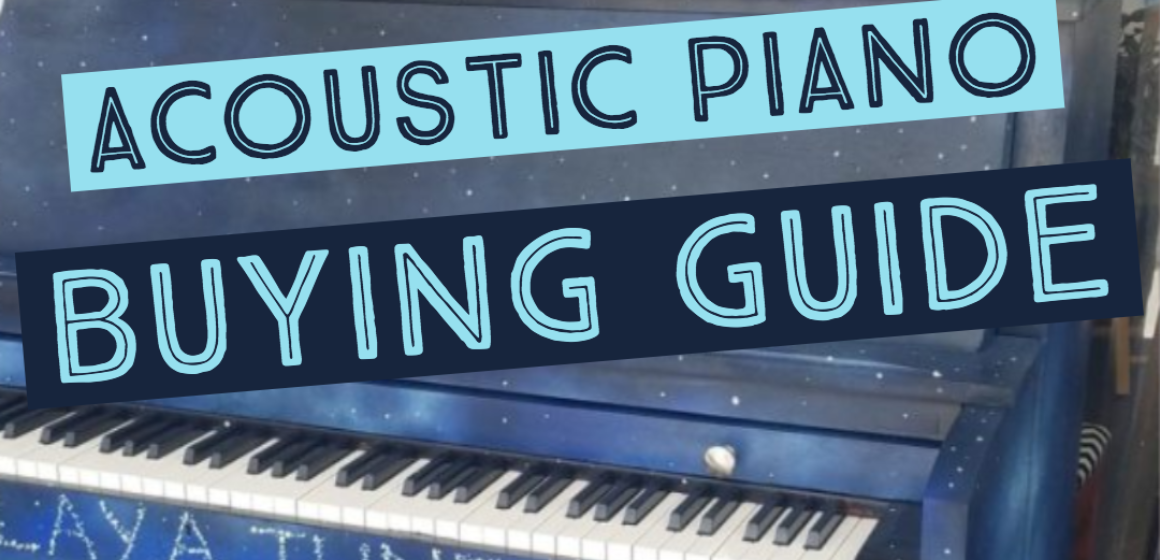Acoustic Piano Buying Guide

You can always go to a showroom and purchase a brand new piano, but doing so will be very expensive. Brand new professional pianos can cost as much as a car! We highly encourage purchasing all acoustic pianos used. You can find some amazing deals and used instruments for sale on the internet. Craigslist, Facebook Marketplace, Nextdoor, Reverb, and other applications are perfect for finding your next piano. However, there are some general safety tips and guidelines that you should follow when meeting a stranger from the web: know how to recognize a scam, take a friend with you, and trust your instinct. It also worthwhile to ask the seller pertinent questions and to do your research about the item before the sale occurs.
Acoustic Pianos
Acoustic pianos are the ‘real’ instruments that you know and love. They usually come in five types:
- Spinet (36-38” tall and 58” wide)
- Upright (45-60” tall and 58” wide)
- Baby Grand (4.5-7.5’ long and 5’ wide)
- Grand (4.5-9.5’ long and 5’ wide)
- Player or Specialty (50-60” tall and 58” wide)
When examining acoustic pianos before purchase, ask the seller if he or she can provide any information about the piano’s age, how much time has passed since it has been tuned, and the amount that it has been used. If you decide to purchase the instrument and a part later breaks, the information that you gained with these questions may help point you or a piano technician in the right direction for repairs.
Be sure to play every single key. Take your time. Every note needs to play cleanly. It’s likely that several keys may get stuck or be sluggish – this is generally an easy repair and should not change your overall opinion of the instrument. Be wary of pianos that have multiple keys that do not make any sound at all. Repairing “dead” keys is often more involved and can be expensive!
Next, hold down the right foot pedal at the base of the instrument and play several notes. All the notes should ring out without stopping until you release the foot pedal. Be wary of right (sustain) pedals that do not function as they should. Repairing it should be relatively easy, but it may inform you of other problems with the instrument.
Ask the seller to open the lid of the piano. Upright-style pianos all have a top panel that can be removed. There is also a second panel below the keyboard and above the pedals that can be detached. These steps are not necessary but removing the panels can help you visually identify any problems or broken pieces that may be present. Do not worry if the instrument is dusty, dirty, or has spiderwebs in it. Carefully examine the piano hammers (the oblong felt pieces that strike the strings) to ensure that none are broken or missing. Hammer repair is tedious and time consuming. Consider how much energy and money you want to invest in the instrument if it has broken hammers. Likewise, string repair can become costly. If several notes do not make sound due to missing or broken strings, move on to a better piano.
It’s likely that some of the piano key tops will be broken or missing. Do not let this deter you from the instrument if nothing else is wrong. Replacement key tops are cheap and very easy to install. Likewise, do not be afraid if the instrument is severely out of tune. If a piano has been neglected for many years, it will simply take several tunings to return it to its correct pitch. This will not have any effect on its value or condition.
Some Absolute No-no’s
Do not buy the piano if it has been exposed to water, has water damage, or has been outside. Water and humidity are devastating to all acoustic instruments.
Do not buy the piano if multiple keys do not make any sound and you are unable to discern the cause. For example, a foreign object may get lodged inside the piano and block keys from working. If you can’t figure out why the keys isn’t working, it will likely cost time, money, and new parts to repair.
Do not buy the piano if it has been sitting in a garage, attic, outdoor storage unit, shed, or any area without air conditioning for an extended period. Any unregulated climate changes will destroy the piano felts. It will also be very out of tune!
Final Notes
Don’t worry about scratches or dents in the finish, broken key tops, tuning issues, unleveled keys (piano keys that vary in height), varying key weight (some keys may be easier to play/require less force than others), dust and dirt, and excess echo or ringing. All of these repairs are easy, and some can be done on your own!
If you feel good about the seller, you can likely trust what he or she is saying. Don’t be afraid to seal the deal!
It’s unlikely that the piano will be perfect. If you know for certain that the instrument will require repairs, you might consider bargaining with the seller for a reasonable reduction of cost. This does not include tuning.
Be sure that you plan accordingly for pickup and transport of the piano. You will need a large truck or trailer (Uhaul is great for this!), at least two strong people (four is best), two piano rollers or rolling carts, tie-downs, water for drinking, and clothes that you don’t mind getting dirty.
Keep in mind that instrument value does not equate to actual price. A nice baby grand may be worth several thousand dollars, but because very few people are looking to buy it (plus, baby grands are so difficult to move!), it may only sell for several hundred. Most upright and spinet pianos can be purchased for less than $150, and often for free. Take all of this into account before seeing the actual instrument.
If you are lucky enough to find a great baby grand piano or grand piano in your price range, it is best to pay extra for professional piano movers to move it for you. These types of pianos are also extremely heavy and may need to be dismantled. Leave this kind of move to the professionals.
Moving the Piano
Move the piano away from walls and furniture. Have the strongest member of your party stand at one side of the piano and grip the instrument. Lifting with the legs, the first person should lift the piano until a second person is able to slide the roller under the instrument. Most pianos have lifting bars or handles on the back side. The process should be repeated with the other side so that, when finished, the piano is resting on two rollers. For upright pianos and spinets, most of the weight is towards the back of the instrument. Once the piano is securely on the rollers, load it onto the vehicle by using a ramp. Be sure to secure the piano with tie-downs once it is the in vehicle. It is best to remove the rollers for transport. Drive slowly and carefully. If the piano falls, it will break.
When you get your piano to its new home, try to find a location in the house that is away from intense sunlight or in the direct path of cooling vents. Placing the piano against an interior wall is best, but don’t worry if this is not possible with your home setup. Protecting the instrument from temperature fluctuations and humidity will reduce the number of tunings that it will need throughout its life.
Specialty Pianos
Avoid specialty pianos unless you have a specific need and thoroughly understand the instrument. Examples include house organs (big, heavy instruments from the 1970s. They usually have two parallel rows of keys and one row of foot pedals. They also often have an electric component.) and player pianos (acoustic pianos with a player mechanism which allows the instrument to play songs by itself). Player pianos are often antiques and can be a nice piece of history to own. They also double as functional pianos but moving them is more difficult because they are several hundred pounds heavier than their acoustic counterparts. If you find a player piano in great condition, be extra careful (and bring extra help!) when moving it.
Good luck with your search for a new-to-you piano, and as always, the team at Songbirds Music, Art, & Dance Center is here to help! Please do not hesitate to ask us any questions about instruments you may find or send us pictures if you are unsure. Contact us here. Happy Hunting!

